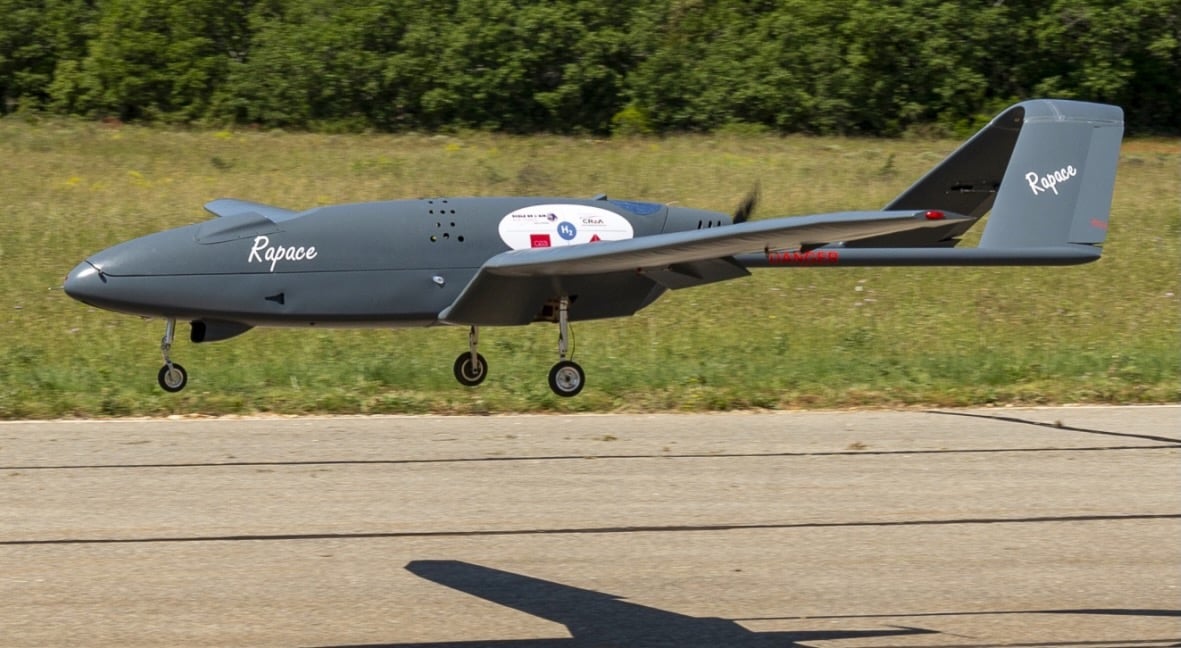At the end of May the hydrogen-powered Rapace unmanned air vehicle (UAV) took to the air for the first time. It was the first flight of a drone with closed cathode and liquid-cooled fuel cell outside of the U.S.
The Rapace H2 project is a collaboration between the instructors/researchers of the air school research center (CREA), part of the military l’Ecole de l’Air et de l’Espace (EAE, air and space school) at Salon-de-Provence and CEA-LITEN, the innovation laboratory for energy technologies/new and nanomaterials of the French atomic energy agency.
CEA-LITEN has been studying aspects of hydrogen fuel for two decades, including hydrogen production, storage and transport. It developed the fuel cell technology for the Rapace program. The CREA is studying the application of hydrogen power to military activities.
Drone specialist Atechsys, was selected to provide the UAV and its ground control station. The company is based at Pourrières in the Var department, where the first flight was undertaken. Support for the flight test was provided by operators from CIFED (initiation and training center for drones), also part of EAE.
